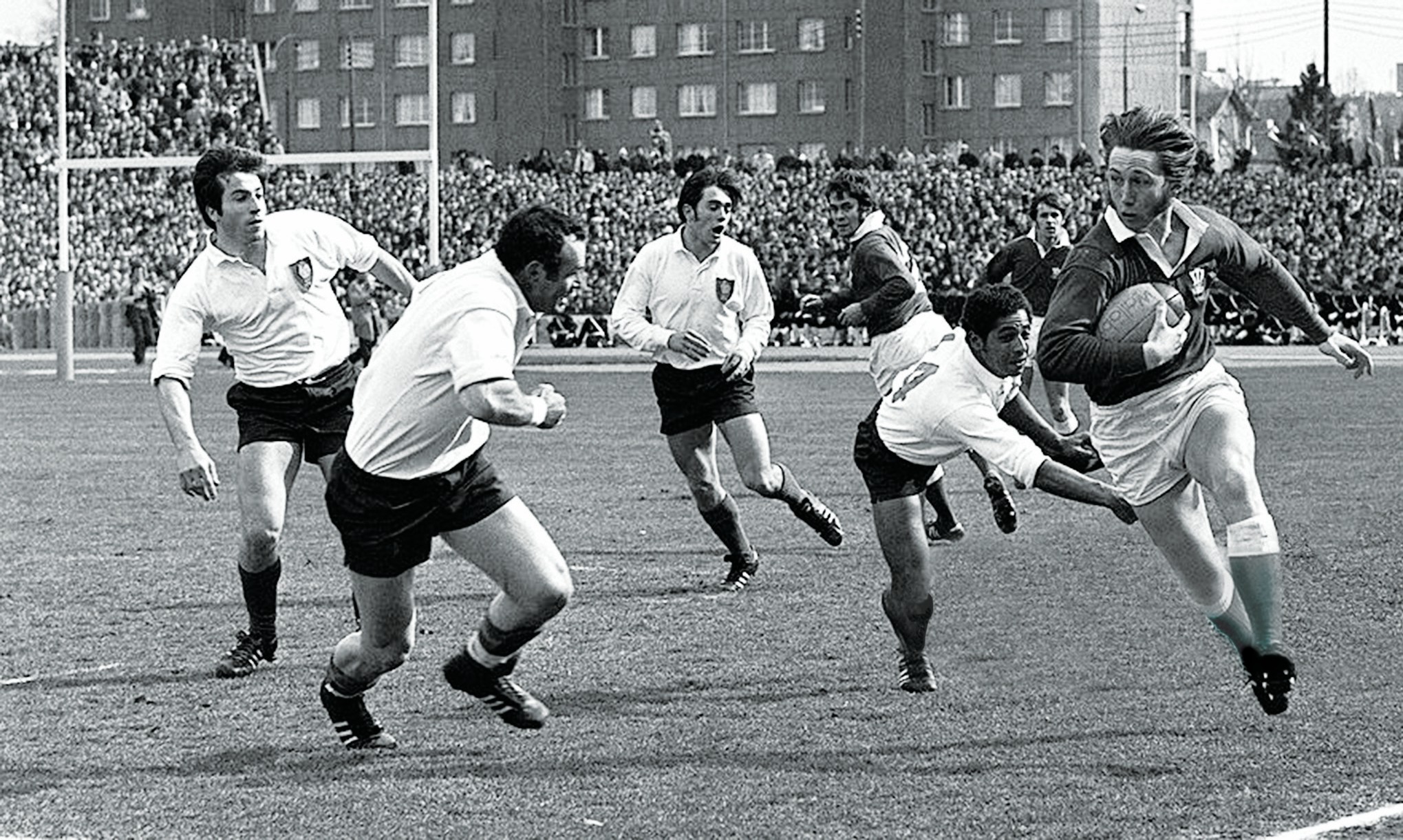Ultimate warrior JPR enters the world stage

Brendan Gallagher delves into some of rugby‘s most enduring images, their story and why they are still so impactful
What’s happening here?
It’s March 27, 1971 and a perfect Spring day at the Old Colombes stadium in Paris, the venue of the 1924 Olympics, with its distinctive residential flats overlooking the action.
France are playing Wales in the final Five Nations fixture of the season and young full-back JPR Williams is giving it heaps as he charges down the left hand touchline.
What is the story behind the picture?
The 1960s had been good for Wales – three outright Championships and one shared title with France – but that is never quite enough for the demanding Welsh public. The Grand Slams of
1950 and 1952 – and the 1953 win over New Zealand –- were the modern day gold standard and although there had been occasional explosions of great rugby since then, the fans were still waiting for a great dynasty to take centre stage.
A great generation of players were clearing coming through – Gareth Edwards, Gerald Davies, Barry John, JPR Williams, Mervyn Davies, John Taylor et al. Others such as Keith Jarrett, David Watkins and Maurice Richards had gone North but the team were progressing steadily towards greatness. They had learned a myriad of lessons during painful defeats on tour in New Zealand in 1969 and that projected them towards another Championship in 1970 but could they start winning Slams? Could they dominate as well as thrill, play with panache as well as power and passion?
What happened next?
Wales, under the captaincy of John Dawes, were on a roll with victories over England (22-16) and Ireland (23-9). Only Scotland at Murrayfield really bothered them with Taylor clinching a 19-18 classic with that famous last minute touchline conversion.
Wales already had the Championship done and dusted by the time they travelled to Paris to take on the French in one of the last Championship games held at the Stade Colombes. They had drawn there two years earlier but had not won at the famous stadium since 1957. It was a belting match decided by a magnificent, often-forgotten Wales try when JPR Williams intercepted a pass from France wing Roger Bougarel five or six yards from his line and stormed upfield, hugging the left touchline.
Some 30 yards out, JPR cleverly moved infield and then passed back out to the left wing where the supporting Gareth Edwards was steaming up to sprint and dive in for a spectacular score which effectively clinced Wales’ 9-5 win.
In the long term this was a massively important day, the moment the rugby world realised this wasn’t just a good Welsh team, it was a truly great side.
Why is this picture iconic?
I’ve always loved this picture which encapsulates the aggression, combativity and sheer rugby talent of JPR Williams, not to mention his world class sideburns and flowing hair.
The Wales full-back was a force of nature but one of those great players – David Duckham is another – who proved a little elusive pictorially.
There are, of course, some gruesome shots of his lacerated face when he got stamped on by All Black John Ashworth in Bridgend‘s game against the All Blacks, and other studies of his courage. But, as a young rugby fan, it was his uber aggressive running that appealed more than anything.
JPR had an incredible game on this sunny afternoon when the low scoreline belied a high octane, fast paced, classic and this is one of many counter attacks he launched. Although Arthur Lewis and Barry John are looking, you sense JPR is on his own, surrounded by French defenders,
You can feel the ferocity and power of his running as he blasts his way down the left touchline. He has left Bougarel for dead and although the coaches will tell you the ball should be in two hands or his left hand, giving the option of a right hand fend, JPR is bracing for imminent contact with France hooker Reme Benesis. My money is on JPR!
This isn’t the 70-yard charge down the touchline to create Edwards’ celebrated try but the devil was in JPR this day, he was the difference between France and Wales, the difference between a Championship and a Slam. And it was the start of the halcyon years for this Welsh team.
Footnote: This was a golden period for JPR. Three months later he was dishing out more of the same to the All Blacks. A world star had well and truly arrived.